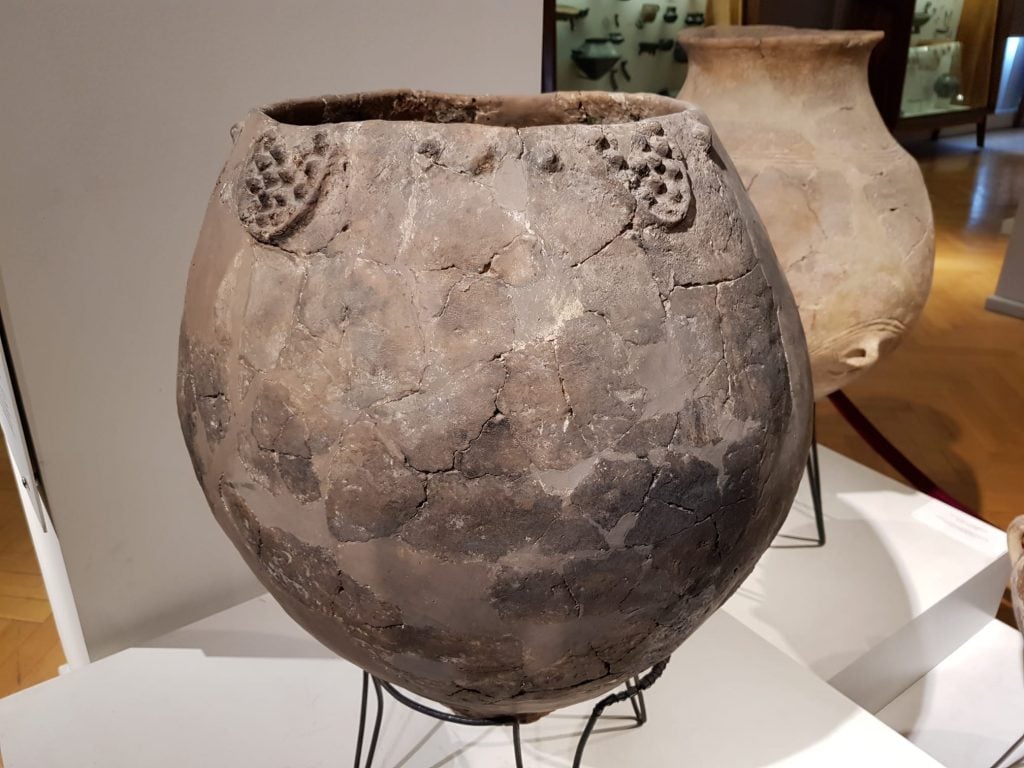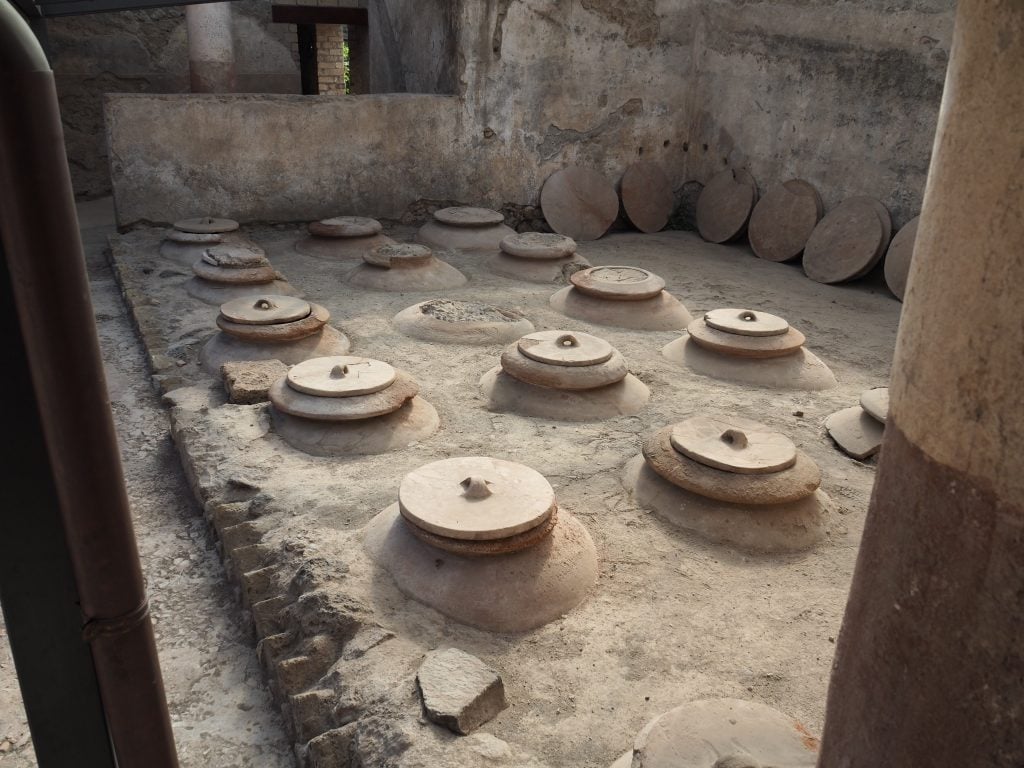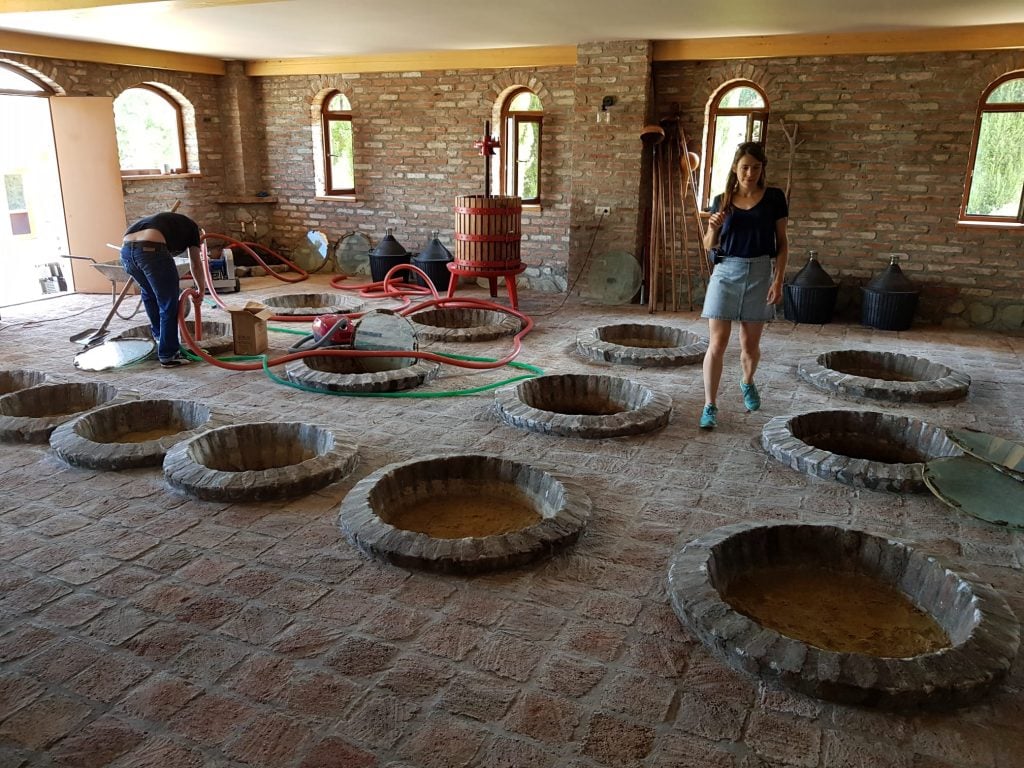Archaeology & History
Apples, Walnuts… and Toast? A New Study Reveals the Flavors of Ancient Roman Wine
Researchers analyzed the clay vessels ancient Romans used to ferment grape juice

Unlike the highly-mechanized processes of the modern wine industry, Georgian vintners still employ a rustic approach. Grapes are crushed by hand or foot, placed in egg-shaped vessels known as qvevri, and buried for up to six months. It’s a UNESCO-recognized tradition dating back 8,000 years and one researchers believe can help reveal the sight and scent of ancient Roman wine.
From Ovid’s poetry to the cellars of Villa of Augustus, Roman wine has rich documentation and its socio-economic functions have been much studied. Less attention, however, has been given to the craftsmanship and sensory nature of a product many Romans imbibed daily.
A recent paper in Antiquity addresses this oversight by focusing on dolia, the ovoid-shaped clay vessels Romans used to ferment grape juice, and comparing them with Georgian qvevri. Dolia have long been considered generic, mass-produced objects unworthy of serious study. Recent research, however, shows they were crafted by skilled artisans using specific clay mixtures before being exported across the empire.

The dolia defossa wine cellar of Villa Regina. Photo: Ministero della Cultura—Parco Archaeologico di Pompei
“On a trip to Georgia in 2019, I realized the major potential of these vessels as modern exemplars to elucidate Roman winemaking practices,” said lead author, archaeologist and self-described aspirant sommelier Dimitri Van Limbergen. “I started investigating clay jar winemaking and the effects of techniques and vessel properties on wine sensory profiles and comparing them with what we know from ancient sources.”
Qvevri and dolia share three key characteristics, the authors argue. First, a shape that produces internal currents that ensures fermentation is uniform. Second, a porous vessel with a coated interior—dolia with pitch and qvevri with beeswax—that results in micro-oxygenation. Third, a practice of burying that regulates temperatures during fermentation.
Together, these characteristics provide an ideal environment for the stable development of flor yeasts on the wine’s surface. The likes of Pliny and Columella described the presence of flower yeasts, offering the authors further license to speculate on the profile of Roman wines.

Modern Georgian winery of Orgo, Teleda, Kakheti, Georgia. Photo: D. Van Limbergen.
Flor yeasts produce sotolon, a chemical compound that is responsible for the slightly spicy taste in many qvevri wines. For aroma, think toast, apples, roast walnuts, and curry. Indeed, experiments in the 1990s based off Columella’s rough guide to winemaking produced a wine reminiscent of qvevri.
A further question that has long puzzled academics is the color of Roman wine. Descriptions range from pale white, to red yellow, to blood red, to dark black. The Romans didn’t distinguish between red and white wine in the modern sense, but prolonged maceration, a feature common to qvevri wines, would have been beneficial for the stability and longevity.
One impact of the research, Van Limbergen notes, is that it dismisses the reputation Roman wine has among scholars as undrinkable due to the lack of artificial preservatives. “Of course, bad wines existed, as they do today,” Van Limbergen said. “But Romans were able to make decent to very good wines by using these clay jars.”





